News Based on facts, either observed and verified directly by the reporter, or reported and verified from knowledgeable sources.
Working Together: Tribal partnerships bring regional jobs
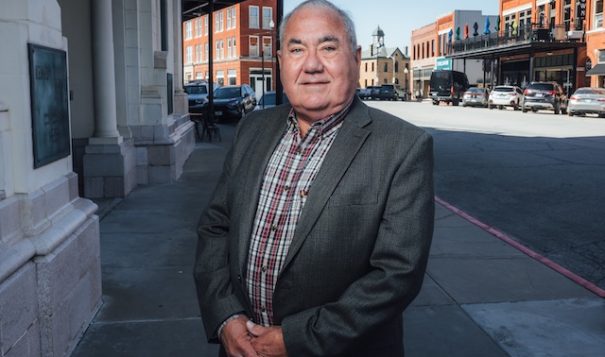 Osage Nation Principal Chief Geoffrey Standing Bear stands in downtown Pawhuska, Oklahoma, on April 6, 2022, where he has been working to develop intergovernmental partnerships on multiple community projects that will benefit the entire region. (Photo by Cody Hammer/Osage News)
Osage Nation Principal Chief Geoffrey Standing Bear stands in downtown Pawhuska, Oklahoma, on April 6, 2022, where he has been working to develop intergovernmental partnerships on multiple community projects that will benefit the entire region. (Photo by Cody Hammer/Osage News)
Osage Nation joins with city, county for economic development projects
This story is part of a collaborative series, “At the Crossroads,” from the Institute for Nonprofit News, Indian Country Today, Osage News and eight other news partners, examining the state of the economy in Indian Country. This reporting was made possible with support from the Walton Family Foundation.
By Shannon Shaw Duty
Osage News
PAWHUSKA, Oklahoma — A walk in downtown Pawhuska on a brisk Saturday morning in March finds the town bustling.
Spring break has brought tourists from throughout the country descending on the Osage Nation Reservation. They drift in and out of The Pioneer Woman Mercantile store with bags in hand and smiles on their faces. They drive up Kihekah Avenue in search of the Osage Nation Museum and see buffalo on the Tallgrass Prairie National Reserve.
Pawhuska is the Osage Nation capital, the Osage County seat and a place the Osage people call home. A hub of culture and history, it’s where generations of oilmen and ranchers came to make a better life.
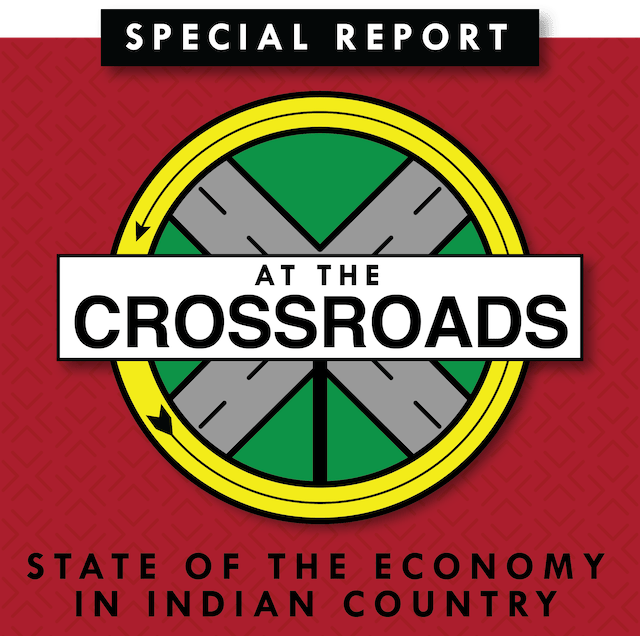
Living together has had its ups and downs over the years, to be sure, but the climate is changing. A volatile relationship once laced with racism and greed is slowly becoming one of partnership as the tribe, city and county work together for the benefit of all.
Plans are underway for the Osage to open new casinos and hotels in Bartlesville and Pawhuska with city utilities, and the tribe is looking to build a sports complex that could host tournaments and other events, drawing visitors to local restaurants, lodging, shopping and other attractions.
Additional projects include expansion of Broadband internet, community healthcare, senior housing, water projects and bridge and road work.
Leading those efforts are Osage Principal Chief Geoffrey Standing Bear, Osage County Commissioner Randall Jones and Pawhuska City Manager Jerry Eubanks. Their goal is to improve the lives of all who live here, with jobs and development providing an economic boost for the region.
“We have to have these partnerships to grow,” Standing Bear told Osage News.
Eubanks said he would like the city, county and Osage Nation to come together to form a 10-year comprehensive plan.
“It’s going to take a sit-down with the commissioner, the tribe and the city,” Eubanks said. “Sure, I could put a plan out there, but it isn’t going to be accurate and why would I waste the time and the money to do it? … With all three entities sitting down together and mapping out where we go from here – would be huge. That needs to happen.”
Partnerships and solutions
Standing Bear, 68, a trial lawyer in Indian Country for more than 35 years, has been chief of the Osage Nation for eight years and is seeking re-election in June. During his two terms, his administration has purchased more than 50,000 acres of land within the 1.47-million-acre reservation.
“We’ve lost so much of our lands in the last 100 years,” he said. “We have to have water, sewer. We have to have law enforcement. We have to have all these issues within this larger dominant culture that has surrounded us … We have to recognize that we have neighbors that have infrastructure that we need.”
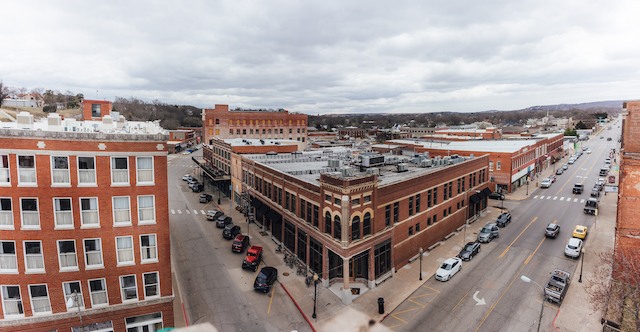
Jones, 58, a county commissioner for three years who is now chairman of the board, is also seeking re-election from his district, which is the most rural district in the county. He is of Seneca descent, and has spent the majority of his life improving Osage County. As commissioner, he helps oversee construction, maintenance, improvements to buildings, roads, bridges, the county jail, the courthouse and equipment.
Eubanks, 55, who lived in Pawhuska for two years before becoming city manager in December, said the Osage Nation is like having a city-within-a-city. But he said he doesn’t see separate communities — just one.
“One of my first meetings with Randall was about community relations, and I don’t want to say things were strained, but it was a little bit of an uphill battle putting together the three entities, for one reason or another, and it’s really no one’s fault,” said Eubanks, who formerly worked as manager of the Blackwell Utility Trust Authority and as Blackwell’s assistant city manager. Before that, he was city manager for Fairview, Oklahoma.
“I remember one of the first things Randall said to me was, ‘I want to make this a better relationship for all of us,’ and he said, ‘What can we do to make this beneficial for every one of our communities?’” Eubanks said. “I think to elaborate on his last statement is, ‘Every day, things get better.’”
He continued, “The tribe’s there and willing to help. They’ve been willing to help on any matter I’ve taken to them.”
More jobs needed
Stretching from the Oklahoma border with Kansas down to Tulsa and Ponca City, the Osage Nation is the largest employer in Osage County, with about 500 jobs in its government offices and programs, and about 2,000 at its seven Osage Casino locations and central offices.
Since 2002, the Osage Nation has owned and operated casinos in north Tulsa, Sand Springs, Skiatook, Bartlesville, Ponca City, Hominy and Pawhuska. New casinos and hotels are under construction for Bartlesville and Pawhuska and are expected to bring more jobs to both.
The second-largest employer is Ree Drummond, who shot to fame as “The Pioneer Woman” with a Food Network cooking show. She now operates The Mercantile general store, which includes a bakery and restaurant, and a boarding house hotel. Tourists come to see her and discover that a tribe is also located in the area.
The diverse workforce for both entities is Native and non-Native. Many are simply happy to have a job after the pandemic arrived in 2020, but competition is tough, and it’s widely whispered that it’s not what you know but who you know.
The reservation’s boundaries are also the boundaries for Osage County, which has more than 45,000 residents with a median household income of $49,103. About 14 percent of the county residents identify as Native American, and 11.4 percent of reservation families live in poverty.
Pawhuska, the county seat, has about 3,480 residents within its boundaries, with other residents scattered among smaller towns such as Hominy at 3,430, Fairfax at 1,330 and Barnsdall at 1,033.
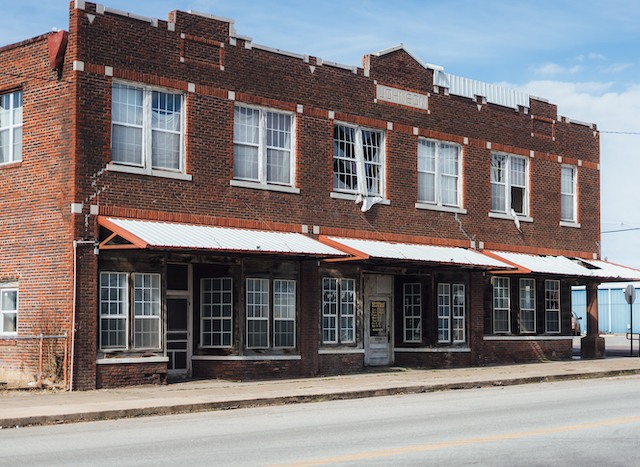
Finding a job outside Pawhuska is particularly challenging.
A walk along the main streets in other reservation towns such as Fairfax, Hominy and Barnsdall reveal boarded storefronts and damaged buildings, most of which are empty. After 5 p.m., they become ghost towns.
Diversifying the economy
Other Oklahoma tribes have turned to collaborations with some success in their efforts to diversify business interests beyond gaming.
The Cherokee, Muscogee (Creek), Chickasaw and Choctaw nations started with gaming but have been successful in other business ventures, bolstered by their proximity to the state’s two largest cities, Tulsa and Oklahoma City. Cherokee Nation Businesses, a tribally owned entity, oversees operations that include renewable energy, real estate, information technology, security and defense, environmental and construction, and technology, cultural and economic development. It recently opened a film office.
The Osage Nation, by contrast, is almost entirely funded by the seven casinos. When the pandemic forced casinos to close for about two months, 900 casino workers were furloughed and 45 Osage Nation government employees were laid off — a stark reminder that without casino revenue, the tribe’s operations were threatened.
Osage LLC, the Osage Nation’s business arm, has had little luck diversifying business interests and turned a profit only within the last 18 months. Before 2021, it lost more than $20 million because of fraud, embezzlement and bad business decisions. Several lawsuits ensued between 2015-2019, but the nation never recouped more than $150,000 from a former CEO.
The pandemic produced an unlikely venture, however.
In 2020, the Osage Nation received more than $44 million in federal CARES Act funding and in 2021 more than $137 million in federal American Rescue Plan Act funds. Of the federal funding, $7.5 million was dedicated to the nation’s 270-acre farm, Harvest Land, which includes a 42,000-square-foot greenhouse and a 44,000-square-foot facility with aquaponics and food processing areas.
North of Harvest Land is the nation’s Heritage Trail, which a popular attraction that opened to the public in April 2021 with paved walking trails and Osage-themed playgrounds. Still to come are a disc golf course and fishing pond. The trail entrance on U.S. 60 is across the street from the Osage Nation’s Visitors Center.
Big business of sports complexes
Citing the trail’s success, Standing Bear said it’s now time for an outdoor sports complex, an initiative he’s been asking the Osage Nation Congress for funding for more than a year that will require collaboration with the city and county.
The Osage Nation held a community meeting in August 2021 to discuss what amenities the complex might offer to lure families to the area for a weekend or longer as their children competed in sports tournaments.
A blueprint of the proposed complex shows a fitness trail, picnic plaza, batting cages, soccer fields, five baseball fields, basketball courts, an urban garden, parking lots, food truck areas, playgrounds, a sand volleyball area, horseshoe pits and an outdoor pavilion. The fitness trail would link to the existing Heritage Trail.
“I have studies now that the average life expectancy of an Osage is 10 years less than the average life expectancy of an Osage 60 miles away in Tulsa,” the chief said. “Ours here is 10 years less than an Osage in Tulsa. And you look at the reasons for it, and the study shows obesity, higher stress, more single head-of-household stress situations, smoking. All these issues can be approached and worked with by this outdoor facility.”
Standing Bear said that if the necessary funding is obtained, the added revenue would benefit the entire community. The state Legislature rejected the plan, but the city and county have supported it.
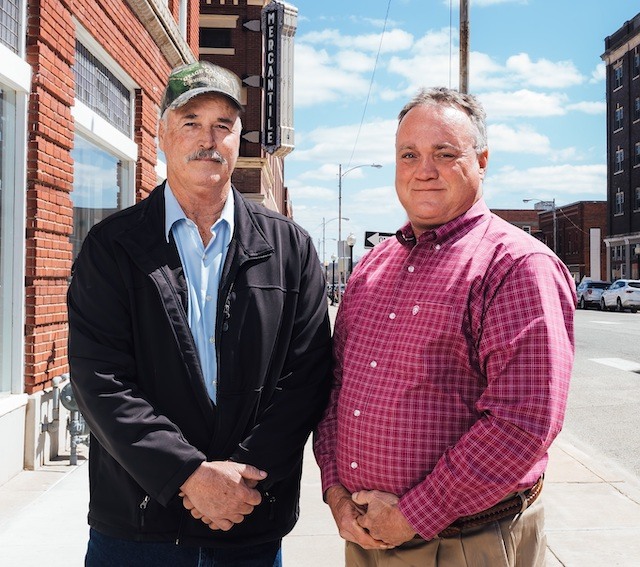
Jones and Eubanks support the sports complex. Eubanks, whose 13-year-old son plays competitive sports, helped bring a sports complex to Fairview, Oklahoma, where he was city manager in 2018. Local businesses prospered, and the area received a boost in sales tax, he said.
With the new Osage Casino and hotel coming to Pawhuska and the possibility of another hotel inspired by “The Pioneer Woman,” Pawhuska could be the premiere attraction in northeastern Oklahoma.
“Anything we can do to better this community for our youth and leave it better than we found it, I’m all for,” Eubanks said.
“I don’t want my kids to have to worry about infrastructure,” he said. “I know what a sports complex will do. We took an old rundown ball field we couldn’t even have a tournament on and turned it into a place where they now host the regional state tournament. If it’s far enough away, I’m getting a hotel room, I’m eating, I’m staying, and my wife is shopping.”
Jones said county commissioners sent the tribe a letter of support to accompany a grant application for the sports complex.
“This has been needed for 40 years,” he said. “There are a few bumps in there, closing a road and moving it over, but they’ve accommodated that. This has been needed. I have two sons that have three state championships in baseball, and we didn’t play those championship games here. We played them in Bixby, Tulsa, Sapulpa and Broken Arrow when we should have played those games here. I have wanted something like this forever.”
Looking ahead
The three leaders agree that working together helps the region.
Standing Bear said much good work has been done but more remains. The community needs to work together to build infrastructure for the broadband internet expansion, new senior housing for Osage citizens in Hominy, road and bridge improvements, and community healthcare improvements.
“There’s much more,” Standing Bear said.
Eubanks said he is signing up for the tribe’s Summer Youth Job Worksite program in hopes of interesting Native students in careers with the city.
Jones said his first summer job was with the Osage Nation when he was 15 years old. He worked with the late Buddy Red Corn, a revered and decorated Vietnam veteran who worked in the mailroom and maintenance departments for more than 35 years for the Osage Nation.
“We have deep ties here,” Jones said. “We care about our community as a whole.”
In the works
The Osage Nation is working with Osage County and the City of Pawhuska to develop other projects in the region. They include:
—Broadband Internet expansion. The tribe and city of Pawhuska have signed agreements granting rights-of-way for the tribe to expand fiber-optic cable that will provide better internet for the community. The move would help the tribe expand infrastructure to other communities.
—Community healthcare. The Osage Nation is in talks with the city trust authority about partnering with the Pawhuska hospital to supplement funding to improve service for the hospital and WahZhaZhe Health Center.
—Hominy senior housing. The tribe has been meeting with the city about water and sewer needs for construction of senior housing units. The nation recently purchased 44 acres in Hominy for the project.
—Water operators. Through a tribal-city partnership, operators from several towns and the Osage Nation would be trained and certified through the Oklahoma Department of Environmental Quality at reduced cost.
—Lynn Project. The city, county and tribe are negotiating striping roads, parking lots, crosswalks and turn lanes within the Pawhuska city limits. The first stripes were painted more than 30 years ago, and fading crosswalk markings have been especially problematic with the influx of tourists.
—Bird Creek bridge. The $2.5 million, long-term Bird Creek bridge project would refurbish and widen the historic stone bridge that connects to Osage land and its heritage trail.
—21st Street Project. The $4 million project would benefit Pawhuska Public Schools by adding a 300-foot turn lane at the elementary school on 21st Street.
—Nelagoney bridge. A new bridge would be constructed to help provide access to six families in Nelagoney, including an Osage family, for about $900,000.
This story is part of a collaboration from the Institute for Nonprofit News Rural News Network in partnership with INN members Indian Country Today, Buffalo’s Fire, InvestigateWest, KOSU, New Mexico In Depth, Underscore and Wisconsin Watch, as well as partners Mvskoke Media, Osage News and Rawhide Press. Series logo by Mvskoke Creative. The project was made possible with support from the Walton Family Foundation.
The Osage News is the official independent media of the Osage Nation. It is dedicated to covering the stories of the Osage people, its government, community and issues. The Osage Nation is located in northeastern Oklahoma and has approximately 23,000 members.
